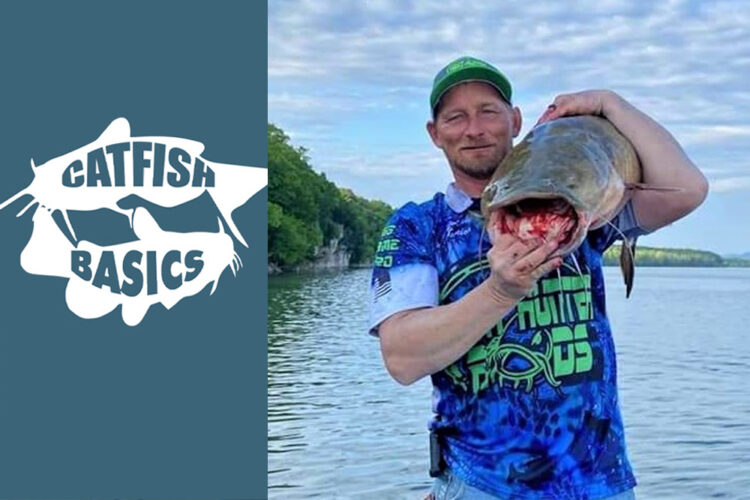I get very excited when the spring weather rolls in each year. With the warmer air and water temperatures, the catfish begin moving around more. They are eating more to bulk up in preparation for the upcoming spawn.
During this time I like to mix up my bait choices with different species and different cuts. I will try large and small baits by using heads, center cuts, and side cuts. Often the tails will work too so tails are worth a try.
Shad and skipjack are my go-to bait here in my waters. I suggest removing the dorsal fin completely to allow more blood flow from the bait increasing its effectiveness. More blood flow means a stronger scent trail.
I enjoy fishing shallow creek beds where I fan cast my Meat Hunter Rods and let the bait soak for a while. I typically do not look to mark fish but follow my instincts to select spots to fish.
I also suggest using different rigs. On any given day I might use the Santee Cooper rig, the Kentucky rig, and drifting rigs. Using an assortment of rigs on each fishing trip will help identify what is working best for that spot on that day.
Large shallow flats below dams are a good bet this time of year. Catfish are leaving their winter holes in search of prime spawning grounds. I would start on the flats then work my way out to deeper water. I use Parks Planers Boards to cover a lot of water. Pull the boards down channel ledges while keeping the bait on the top and the bottom of the ledge. It never hurts to have suspended rods out as well.
If I am fishing on the rope, I like to anchor near banks that have a lot of structure or around rock cliffs. Catfish will hold up inside the gaps and crevices in these areas.
SeaArk will be hosting their Owner’s Invitational in Decatur Alabama on Wheeler Lake this April. This is always a popular event. Fishing on Wheeler always keeps me on my toes because you never know what that bent rod will bring in. It could be a two-pound cat or 120-pound trophy.
As a tournament catfish angler, I have discovered that it is not just one single secret that makes a successful angler. Instead, it is numerous tidbits of knowledge gained from articles, experiences shared by fellow anglers, and from your own time spent on the water.



